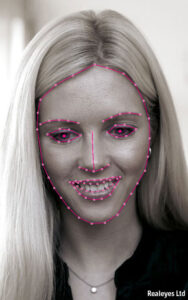Web Cams Transform into Virtual Observers of Consumer Behavior
In the evolving landscape of online interaction, the all-seeing eye of webcams is taking center stage, scrutinizing what we see and how we feel about it. The intrusion of facial monitoring technology into our private spaces raises questions about the fine line between personalized user experience and potential privacy infringement. The Economist aptly captures this phenomenon, questioning whether we are even aware of the subtle body language we convey during a fleeting glance at a tempting piece of chocolate cake, a dazzling item in a store window, or an attractive image in a magazine.
Webcams can now spot which ads catch your gaze, read your mood, and check your vital signs:
Imagine a scenario where an alluring lingerie ad grabs your attention while browsing a website. Instead of dismissing it with a click, you offer a subtle smile and proceed to another page. Unbeknownst to you, the ad continues its pursuit, presenting more provocative images and even tempting you with a special discount. Annoyed by its persistence, you furrow your brow, prompting the ad to apologize for the intrusion and promptly cease its relentless pestering. The line between personalized advertising and eerie surveillance becomes increasingly blurred.
While the potential applications of this technology extend beyond advertising into realms such as security, gaming, education, and healthcare, it is the advertising industry that is at the forefront of its adoption. Advertisers are eager to address the perennial challenge of identifying the effectiveness of their campaigns. The age-old dilemma – knowing that half the advertising budget is wasted but unsure which half – may soon find a resolution through the insights provided by facial monitoring.
Historically, advertising firms resorted to filming people’s reactions to ads in controlled environments, analyzing facial expressions for positive or negative sentiments. The 1970s introduced a comprehensive coding system developed by American psychologist Paul Ekman, which is still widely used to categorize emotions behind facial expressions.
Consumer-research companies have also employed goggle-mounted cameras to track eye movements, determining precisely what captures the subjects’ attention. This insight aids in optimizing ad placement for maximum impact on web pages.
The transition of this technology to the online realm marks a significant shift. Thanks to higher-quality cameras and more sophisticated computer-vision software, participants can now engage in this research remotely, without the need for clunky headgear. A single webcam is all that’s required to track eye movements, making the process seamless and less intrusive.
As we navigate this brave new world of interactive advertising, where our devices not only observe but respond to our emotional cues, the fine balance between customization and privacy preservation hangs in the digital air. The next wave of consumer engagement has arrived, and it’s bringing with it questions that delve deep into the heart of our online experiences.”






